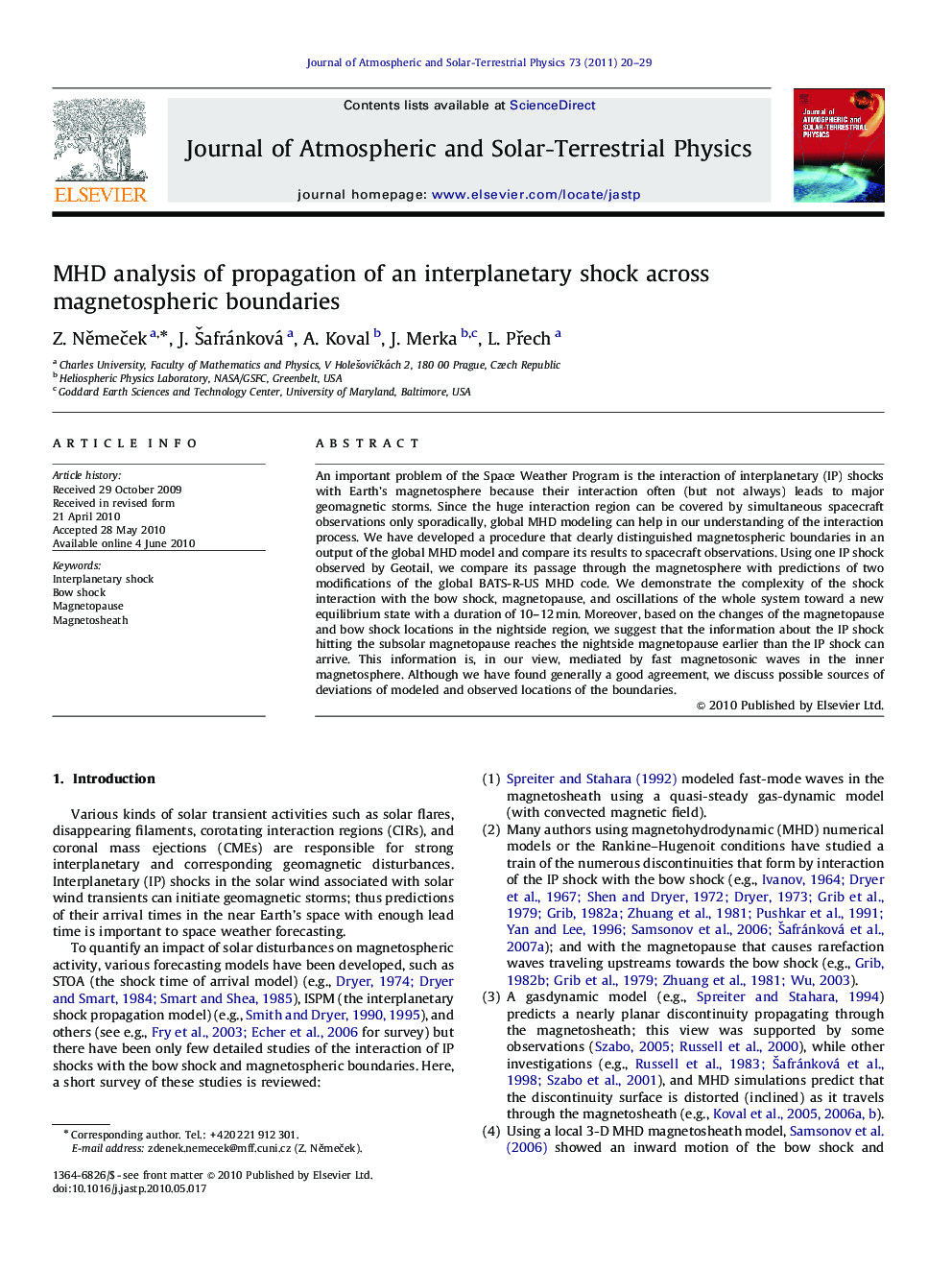| Article ID | Journal | Published Year | Pages | File Type |
|---|---|---|---|---|
| 1777537 | Journal of Atmospheric and Solar-Terrestrial Physics | 2011 | 10 Pages |
An important problem of the Space Weather Program is the interaction of interplanetary (IP) shocks with Earth's magnetosphere because their interaction often (but not always) leads to major geomagnetic storms. Since the huge interaction region can be covered by simultaneous spacecraft observations only sporadically, global MHD modeling can help in our understanding of the interaction process. We have developed a procedure that clearly distinguished magnetospheric boundaries in an output of the global MHD model and compare its results to spacecraft observations. Using one IP shock observed by Geotail, we compare its passage through the magnetosphere with predictions of two modifications of the global BATS-R-US MHD code. We demonstrate the complexity of the shock interaction with the bow shock, magnetopause, and oscillations of the whole system toward a new equilibrium state with a duration of 10–12 min. Moreover, based on the changes of the magnetopause and bow shock locations in the nightside region, we suggest that the information about the IP shock hitting the subsolar magnetopause reaches the nightside magnetopause earlier than the IP shock can arrive. This information is, in our view, mediated by fast magnetosonic waves in the inner magnetosphere. Although we have found generally a good agreement, we discuss possible sources of deviations of modeled and observed locations of the boundaries.
